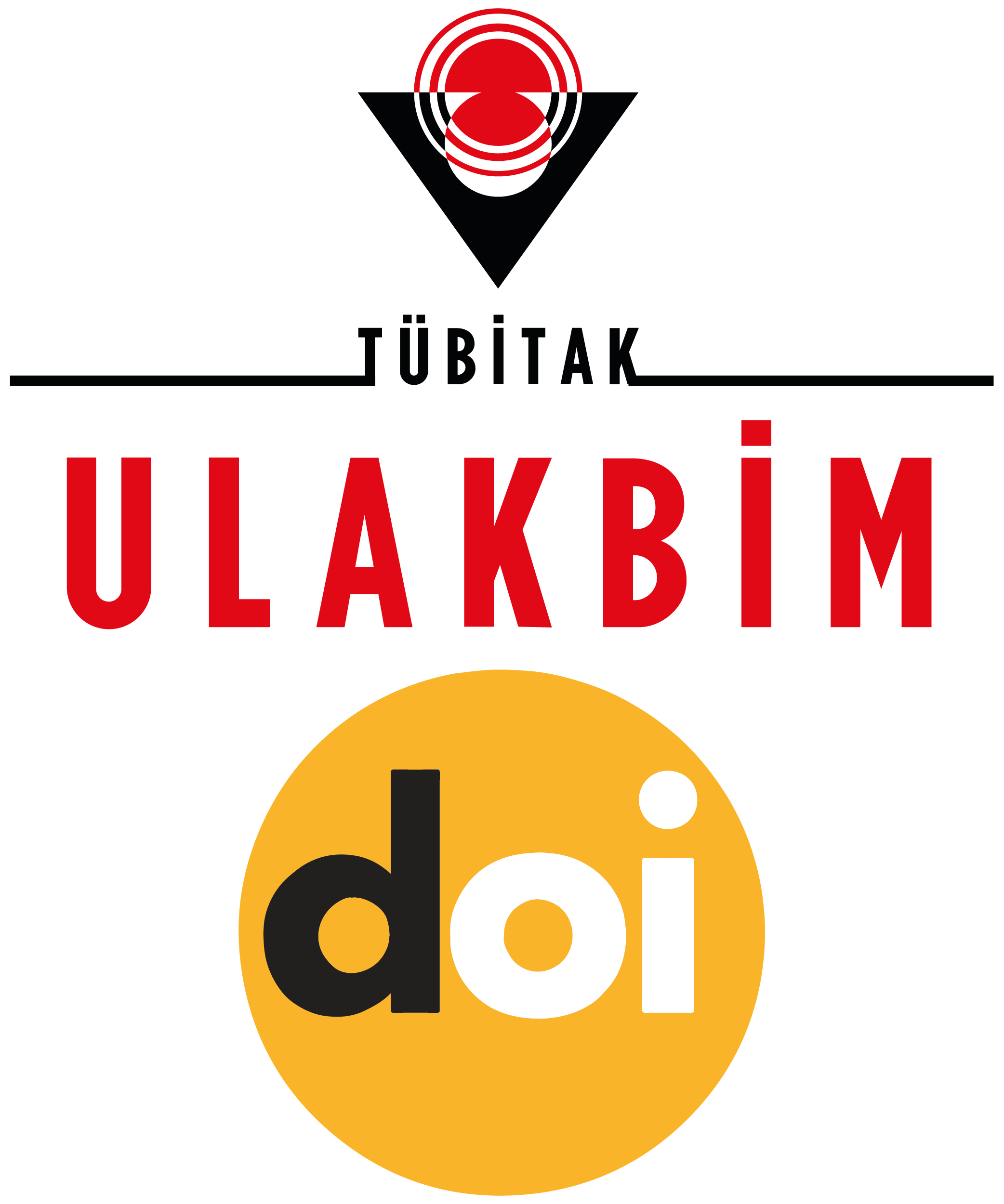Birth Tourism as a Strategy for Global Mobility and Citizenship: A Study on Turkish Families
DOI:
https://doi.org/10.21325/jotags.2025.1660Keywords:
Birth tourism, Jus soli citizenship, Global mobilityAbstract
This study examines the motivations, experiences, and challenges of Turkish citizens participating in birth tourism and examines the processes behind their decision to give birth abroad and the consequences of this process. The findings show that the most fundamental motivation for birth tourism is the desire to acquire citizenship in countries that grant jus soli (citizenship by birth). However, families' desire for access to quality healthcare and economic instability are among the important factors affecting birth tourism. Maxqda was used in the analysis process of the study. The research findings basically progress in 4 sections: The motivation category, decision-making category, process category and experience category. These themes were determined in line with the participant narratives and analyzed in relation to the theoretical framework of the study. This study emphasizes the need to examine in more detail the long-term effects of birth tourism on children born abroad and the policy arrangements of host countries towards this phenomenon. By analyzing the opportunities offered by birth tourism and the constraints it faces, this study contributes to a deeper understanding of the shaping of contemporary transnational mobility.
References
Abbaspoor, Z., Moghaddam-Banaem, L., Ahmadi, F., & Kazemnejad, A. (2014). Iranian mothers’ selection of a birth method in the context of perceived norms: A content analysis study. Midwifery, 30(7), pp. 804–809.
Alboim, N. & Cohl, K. (2012). Shaping the future: Canada’s rapidly changing immigration policies. www.maytree.com/
Allotey, A. A., Anarfi, J. K., & Kandilige, L. (2023). Birth Tourism to the United States of America and its Perceived Implications for Ghana. Ghana Journal of Geography, 15(1), pp. 1–34. https://doi.org/10.4314/gjg.v15i1.1
Altan-Olcay, Ö., & Balta, E. (2016). Class and Passports: Transnational Strategies of Distinction in Turkey. Sociology, 50(6), 1106–1122. https://doi.org/10.1177/0038038515591944
Anderson, B. (2021). The Banality of Citizenship: From Workers to Migrants and Fantasy Citizens. Journal of World-Systems Research, 27(2), pp. 370–377.
Andreas, P., & Snyder, T. (2000). The wall around the West: State borders and immigration controls in North America and Europe. Rowman & Littlefield.
Arthur, A. R. (2018). Birthright Citizenship: An Overview. www.cis.org
Balta, E., & Altan-Olcay, Ö. (2016). Strategic citizens of America: Transnational inequalities and transformation of citizenship. Ethnic and Racial Studies, 39(6), pp. 939–957.
Banke-Thomas, A., Lewis, O., Duduyemi, A., Ogunyemi, O., & Nadan, T. (2024). Motivations for and experiences of childbirth abroad amongst Nigerian women: A qualitative study. PLOS Global Public Health, 4(9), e0003737. https://doi.org/10.1371/journal.pgph.0003737
Barrucho, L. (2025). Trump wants to end birthright citizenship. Where do other countries stand? https://www.bbc.com/
Bbc. (2025). Trump has vowed to end birthright citizenship. Can he do it? https://www.bbc.com/
Bramadat, I. J., & Driedger, M. (1993). Satisfaction with childbirth: theories and methods of measurement. Birth, 20(1), pp. 22–29.
Brar, S., Kale, M., Birch, C., Mattatall, F., & Vaze, M. (2022). Impact of birth tourism on health care systems in Calgary, Alberta. BMC Health Services Research, 22(1). https://doi.org/10.1186/s12913-022-07522-4.
Cheng, K. M. (2016). Medical tourism: Chinese maternity tourism to Hong Kong. Current Issues in Tourism, 19(14), pp. 1479–1486.
Childrensdefence.org. (2025). What to Know about Trump’s Executive Order Seeking to End Birthright Citizenship. https://childrensdefense.org.
Choi, K., Kim, G., Yoo, D., & Lee, J. (2024). Does Economic Stability Influence Family Development? Insights from Women in Korea with the Lowest Childbirth Rates Worldwide. https://doi.org/10.3390/economies.
Choi, S. Y. P., & Lai, R. Y. S. (2022). Birth tourism and migrant children’s agency: The ‘double not’in post-handover Hong Kong. Journal of Ethnic and Migration Studies, 48(5), pp. 1193–1209.
Cohen, E. F. (2009). Semi-citizenship in democratic politics. Cambridge University Press.
Connell, J. (2013). Contemporary medical tourism: Conceptualisation, culture and commodification. Tourism Management, 34, pp. 1–13. https://doi.org/10.1016/j.tourman.2012.05.009.
Creswell, J. W. (2015). Revisiting Mixed Methods and Advancing Scientific Practices (S. N. Hesse-Biber & R. B. Johnson, Eds.). Oxford University Press. https://doi.org/10.1093/oxfordhb/9780199933624.013.39.
Czaika, M., & De Haas, H. (2014). The globalization of migration: Has the world become more migratory? International Migration Review, 48(2), pp. 283–323. https://doi.org/10.1111/imre.12095.
Downe, S., Calleja Agius, J., Balaam, M.-C., & Frith, L. (2020). Understanding childbirth as a complex salutogenic phenomenon: The EU COST BIRTH Action Special Collection. Plos One, 15(8).
Feere, J. (2010). Birthright Citizenship in the United States A Global Comparison. https://cis.org/sites/cis.org/files/birthright-final.pdf
Feere, J. (2015). tourists come from around the globe. Center for Immigration Studies. Https://Cis.Org/Feere/Birth-Tourists-Come-Around-Globe.
Folse, B. J., & Uk, A. (2017). CORE View metadata, citation and similar papers at core.
Freckelton, A. (2022). Could Canada Abolish Birthright Citizenship? Journal of International Migration and Integration, 23(2), 701–731. https://doi.org/10.1007/s12134-021-00854-w
Gaines, J., & Lee, C. V. (2019). Medical tourism. In Travel medicine pp, 371–375. Elsevier.
Ghahfarokhi, F. S., Nodoushan, A. A., Zinab, H. E., Ruhani, A., & Shavazi, M. J. (2023). At the crossroad of decision to have children: An analysis of individual and social childbearing challenges in the context of low fertility in Isfahan. Journal of Applied Sociology, 33(4), pp. 1–28.
Goldstein, L. F. (2019). Technologies of Travel,’Birth Tourism,’and Birthright Citizenship. Md. L. Rev., 79, pp. 177.
Gonzalez, D. (2011). Arizona Republic “Birth tourism” not a widespread practice in U.S., data show.
Government of Canada. (2023). Birthright citizenship in Canada: Legal framework and implications. www.canada.ca.
Grant, T. (2015). Made in America: Medical tourism and birth tourism leading to a larger base of transient citizenship. Virginia Journal of Social Policy and the Law, 22(1), pp. 159–178.
Harder, L. (2020). “Maternity Tourism”, Civic Integration and Jus Soli Citizenship in Canada. Revue Européenne Des Migrations Internationales, 36(4), pp. 35–54. https://doi.org/10.4000/remi.17109.
Heaton, Z., & Dean, W. (2016). Birth tourism and the Fourteenth Amendment. Brigham Young University Prelaw Review, 30(1), pp. 13.
Heimtun, B. (2007). Depathologizing the tourist syndrome. Tourist Studies, 7(3), pp. 271–293. https://doi.org/10.1177/1468797608092513.
Herrarte, A., Moral-Carcedo, J., & Sáez, F. (2012). The impact of childbirth on Spanish women’s decisions to leave the labor market. Review of Economics of the Household, 10(3), pp. 441–468. https://doi.org/10.1007/s11150-012-9151-z.
Hou, F., & Picot, G. (2024). Earnings of one-step and two-step economic immigrants: Comparisons from the arrival year Economic and Social Reports. https://doi.org/10.25318/36280001202400100006-eng.
Jae-Joon, L. E. E., & Chang-Hyun, K. (2020). Factors related to childbirth intention of migrant women in multicultural marriages in Korea. Iranian Journal of Public Health, 49(8), pp. 1447.
Jaramillo, J., Goyal, D., & Lung, C. (2019). Birth tourism among Chinese women. MCN: The American Journal of Maternal/Child Nursing, 44(2), pp. 94–99.
Ji, Y., & Bates, B. R. (2018). “Better Than Bank Robbery”: Yuezi Centers and Neoliberal Appeals to Market Birth Tourism to Pregnant Chinese Women. Health Communication, 33(4), pp. 443–452. https://doi.org/10.1080/10410236.2016.1278494.
John, W. S., & Johnson, P. (2000). The Pros and Cons of Data Analysis Software for Qualitative Research. Journal of Nursing Scholarship, 32(4), pp. 393–397. https://doi.org/10.1111/j.1547-5069.2000.00393.x.
Kang, T. (2018). New media, expectant motherhood, and transnational families: power and resistance in birth tourism from Taiwan to the United States. Media, Culture & Society, 40(7), pp. 1070–1085. https://doi.org/10.1177/0163443718782002.
Karagöz, D., Işık, C., Dogru, T., & Zhang, L. (2021). Solo female travel risks, anxiety and travel intentions: examining the moderating role of online psychological-social support. Current Issues in Tourism, 24(11), pp. 1595–1612. https://doi.org/10.1080/13683500.2020.1816929.
Kardaszewicz, K. (2019). New rules of the game? Education and governmentality in Chinese migration to Poland. Asian and Pacific Migration Journal, 28(3), pp. 353–376. https://doi.org/10.1177/0117196819877004.
Lee, C. (2007). Medical tourism, an innovative opportunity for entrepreneurs. In Journal of Asia Entrepreneurship and Sustainability: Vol. III (Issue 1). www.asiaentrepreneurshipjournal.com.
Lewis, S., Lee, A., & Simkhada, P. (2015). The role of husbands in maternal health and safe childbirth in rural Nepal: a qualitative study. BMC Pregnancy and Childbirth, 15, pp. 1–10.
Lollman, J. (2015). Notes The Significance of Parental Domicile Under the Citizenship Clause.
Medhekar, A. (2025). Birth Tourism Overseas for Citizenship Rights: Challenges, Opportunities, and Policy Implications. Exploration of Prenatal Tourism and Birthright Citizenship, pp. 289–318.
Ngwira, C., Tse, S., & Vongvisitsin, T. (2020). Negotiation Strategies and Constraints For Solo Female Travelers in Africa. Tourism Culture & Communication, 20(1), pp. 35–47. https://doi.org/10.3727/109830420X15859302993081.
Nori, M. (2016). Asian/American/Alien: Birth Tourism, the Racialization of Asians, and the Identity of the American Citizen. In Hastings Women’s Law Journal (Vol. 27). https://repository.uchastings.edu/hwlj/vol27/iss1/4.
Ong, A. (1993). On the edge of empires: Flexible citizenship among Chinese in diaspora. Positions: East Asia Cultures Critique, 1(3), pp. 745–778.
Ong, A. (1999). Flexible citizenship: The cultural logics of transnationality. Duke University Press.
Peters, M. A. (2007). Foucault, biopolitics and the birth of neoliberalism. Critical Studies in Education, 48(2), pp. 165–178.
Petrozziello, A. J. (2019). Bringing the border to baby: birth registration as bordering practice for migrant women’s children. Gender and Development, 27(1), pp. 31–47. https://doi.org/10.1080/13552074.2019.1570724.
Picchi, A. (2015, February 9). The Booming Business of U.S. Birth Tourism. CBS NEWS.
Reformado, D. O. F. (1934). Unidad General de Asuntos Jurídicos.
Shachar, A. (2009). The birthright lottery: Citizenship and global inequality. Harvard University Press.
Sharma, C., & Pal, D. (2020). Exchange Rate Volatility and Tourism Demand in India: Unraveling the Asymmetric Relationship. Journal of Travel Research, 59(7), pp. 1282–1297. https://doi.org/10.1177/0047287519878516.
Solarin, S. A., Bello, M. O., Lasisi, T. T., & Bekun, F. V. (2024a). Modelling the determinants of birth tourism demand: a time series analysis. Current Issues in Tourism, pp. 1–19. https://doi.org/10.1080/13683500.2024.2325481.
Solarin, S. A., Gorus, M. S., & Ozgur, O. (2024b). Modelling the economic effect of inbound birth tourism: a random forest algorithm approach. Quality and Quantity. https://doi.org/10.1007/s11135-024-01852-7.
Stefan, D. (2023). What is birth tourism? https://traveltomorrow.com.
Stock, M. D. (2012). Is Birthright Citizenship Good for America? Cato Journal, Vol. 32, No. 1, Available at SSRN: https://ssrn.com/abstract=2247463.
Studemeyer, C. C. (2015). Geographies of flexible citizenship. Geography Compass, 9(10), pp. 565–576.
Taniguchi, H., & Baruffi, G. (2007). Childbirth overseas: the experience of Japanese women in Hawaii. Nursing & Health Sciences, 9(2), pp. 90–95.
Tetteh, P. M. (2010). The’American Baby’Syndrome and the Migration of Ghanaian Women. Journal of Management Policy & Practice, 11(5).
The Economist. (2025). To end birthright citizenship, Donald Trump misreads the constitution. https://www.economist.com.
Tomasi, S., Paviotti, G., & Cavicchi, A. (2020). Educational tourism and local development: The role of universities. Sustainability, 12(17), pp. 6766.
Treacy, L., Bolkan, H. A., & Sagbakken, M. (2018). Distance, accessibility and costs. decision-making during childbirth in rural Sierra Leone: a qualitative study. PLoS One, 13(2), e0188280.
Triadafilopoulos, T. (2013). Becoming Multicultural Immigration and the Politics of Membership in Canada and Germany. UBC Press.
Trigg, D. (2021). “It Happens, But I’m Not There”: On the Phenomenology of Childbirth. Human Studies, 44(4), pp. 615–633. https://doi.org/10.1007/s10746-021-09585-4.
VandeVusse, L. (1999). Decision making in analyses of women’s birth stories. Birth, 26(1), pp. 43–50. https://doi.org/10.1046/j.1523-536x.1999.00043.x.
Wang, S. H. (2017). Fetal citizens? Birthright citizenship, reproductive futurism, and the “panic” over Chinese birth tourism in southern California. Environment and Planning D: Society and Space, 35(2), pp. 263–280. https://doi.org/10.1177/0263775816679832.
Ye, B. H., Qiu, H. Z., & Yuen, P. P. (2011). Motivations and experiences of Mainland Chinese medical tourists in Hong Kong. Tourism Management, 32(5), pp. 1125–1127. https://doi.org/10.1016/j.tourman.2010.09.018.
Ying, W., Yiyin, Y., Xiaojiang, W., & En, C. (2017). What determines “giving birth to a son”: the social transformation of how institution and culture affect women’s fertility choices. The Journal of Chinese Sociology, 4, pp.1–22.
Yıldırım, A., & Şimşek, H. (2013). Sosyal Bilimlerde Nitel Araştırma Yöntemleri. Seçkin Yayıncılık.
Published
How to Cite
Issue
Section
License
Copyright (c) 2025 Journal of Tourism & Gastronomy Studies

This work is licensed under a Creative Commons Attribution-NonCommercial 4.0 International License.








